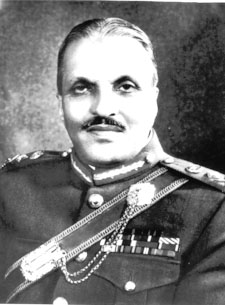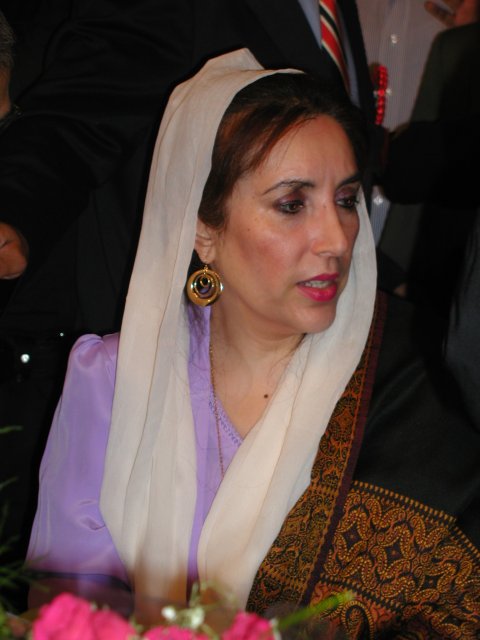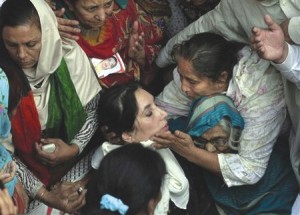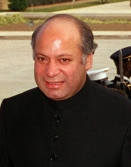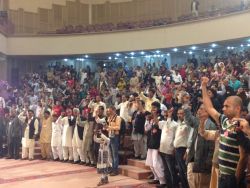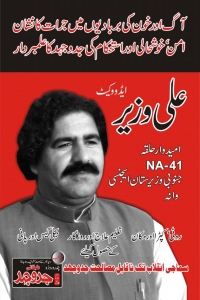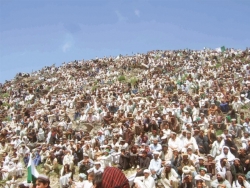This article looks at the situation in Pakistan, and describes on the one hand the effects of decades of rule by an inept and corrupt ruling class that has proven incapable of developing the country and on the other, highlights the immense work done by the comrades of The Struggle in building a Marxist Tendency in these every difficult conditions. [The text is a transcript of several talks given in the USA on Pakistan].
“All the news that’s fit to print” is the New York Times’ famous motto. Its editors—staunch defenders of US capitalism and imperialism—set the overall tone and line of the paper, and get to decide what qualifies as “fit to print.” As Marx explained, the prevailing ideas of any age are the ideas of the ruling class. Those who own the major media outlets have the most control over what information people have access to. No wonder, then, that Americans are woefully uninformed about what is really happening around the world. From Venezuela to Ukraine, from Egypt to Greece, from Mexico to Canada, only a small part of the picture is presented—and rarely, if ever, from the perspective of the working class.
However, perhaps no other country is as maligned and misrepresented as Pakistan. When we are not fed an image of a country made up almost entirely of rabid Islamists and terrorists, tearing itself apart in endless military operations against its own people and rattling the saber of war with India, we are treated to a constant stream of horror stories and tragic absurdities: a young newlywed couple tied up and beheaded by the bride’s family, who disapproved of the match; murder and cannibalism in the tribal wastelands; a 9-month-old infant charged with murder; a woman self-immolates after being gang-raped, her desperate pleas to the police ignored; hundreds literally starving to death in the Thar desert of Sindh, while warehouses of food sit just miles away; top journalists are murdered with impunity and everyone automatically assumes that the state had something to do with it; baton-wielding police attack striking nurses, sending several to the hospital.
And of course, there’s the Taleban, Osama Bin Laden’s hideout, drone strikes, car bombings, gunmen attacking international airports, terrorist plots in Mumbai, border tensions with India, nuclear tests, and let’s not forget, mysterious plane crashes, circus trials, and assassinations of former prime ministers and their family members.
All of these stories are true, and are indeed one side of Pakistan. However, in the midst of the barbarism that stems from capitalism in a state of putrefaction there is a burning desire on the parts of the most advanced workers and youth for a radical change in the situation. As readers of marxist.com’s regular articles by Lal Khan and other comrades of The Struggle are aware, there is another, very different Pakistan—one that is destined to play a key role in the coming world socialist revolution.
Background
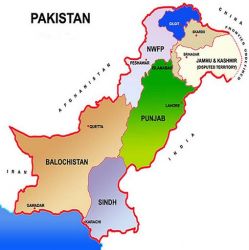 Pakistan is located at the crossroads of the strategically important regions of South Asia, Central Asia, and Western Asia. Bordered by India, Afghanistan, Iran, and China, Pakistan is the world’s 6th most-populated country, with a population of roughly 190,000 million. It is the world’s second-largest ostensibly Muslim country, after Indonesia. Although it is famous for its deserts, plains, mountains, jungles, and rivers, it also has a 650 mile coastline along the Arabian Sea and the Gulf of Oman. It is separated from Tajikistan by the narrow Wakhan Corridor in Afghanistan, and also shares a marine border with the Gulf state of Oman.
Pakistan is located at the crossroads of the strategically important regions of South Asia, Central Asia, and Western Asia. Bordered by India, Afghanistan, Iran, and China, Pakistan is the world’s 6th most-populated country, with a population of roughly 190,000 million. It is the world’s second-largest ostensibly Muslim country, after Indonesia. Although it is famous for its deserts, plains, mountains, jungles, and rivers, it also has a 650 mile coastline along the Arabian Sea and the Gulf of Oman. It is separated from Tajikistan by the narrow Wakhan Corridor in Afghanistan, and also shares a marine border with the Gulf state of Oman.
Pakistan is considered by the CIA to be on the verge of becoming a “failed state.” Many analysts believe it to be the most dangerous place on earth—and that’s saying something these days. The city of Karachi has been described as a veritable living inferno, with its 24-million inhabitants trapped in a nightmare of car bombings, shootings, kidnappings, and other religious and ethnic sectarian mayhem and murder.
An internal civil war is raging between different factions of the state and different gangs of legal and illegal gangsters over the vast wealth of the country and the drug trade in Afghanistan. Proxy wars between Chinese and US imperialism, and between Saudi Arabia and Iran, are tearing the country to pieces with millions of innocents caught in the crossfire. The various Gulf States and India are also actively throwing fuel on the fire of festering conflicts from mineral-rich Balochistan to Kashmir to Sindh to Khyber Pakhtoonkwa to the Federally Administered Tribal Areas not even under the direct control of the Pakistani state. The Taleban, Al Qaeda, and other militant groups including fundamentalist outfits like Jamaat e Islami and the quasi-fascist MQM terrorize the masses on the streets and from their positions in government. US drone attacks have killed hundreds of ordinary Pakistanis, with particular ferocity in Waziristan on the Afghan border.
And as if all this weren’t enough, temperatures in many regions soar into the 100s for months at a time, as its millions of peasants and an estimated 1.7 bonded laborers work in serf- and slave-like conditions in brick kilns, rice paddies, and other labor-intensive pits of hell using centuries-old technology in scenes straight out of Dante.
Lenin once described tsarist Russia as a “prison-house of nations.” The current state of Pakistan is much the same, with dozens of ethnicities, religions, and languages within its artificial confines. Punjabis, Kashmiris, Pashtos, Sindhis, Balochis, Hazaras, Saraikis, Shinas, Brahulis, Muhajirs, Makranis, Wakhis, and more are compressed into an unholy mess of tensions and contradictions that flow from the poverty of the masses and the callous indifference of the ruling class. To give just one example, the Hazaras are descendants of the Mongols, who arrived in what is now Balochistan even before Chenghis Khan. They are regularly targeted for ethnic pogroms and murder, often stirred up and encouraged by the state itself. Then there are the Shiia, Sunni, Wahabis, and dozens of other Muslim sects and subsects, as well as a handful of Christians and those Hindus and Sikhs that remain in Pakistan after the communal terror that followed partition in 1947.
Conditions of life
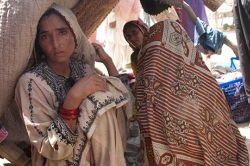 Millions in Pakistan live in appalling misery on a scale unimaginable to most Americans. The country is a mind-blowing example of the Marxist concept of “uneven and combined” development, a dysfunctional mix of capitalism grafted onto semi-feudal and even more ancient forms of social organisation.
Millions in Pakistan live in appalling misery on a scale unimaginable to most Americans. The country is a mind-blowing example of the Marxist concept of “uneven and combined” development, a dysfunctional mix of capitalism grafted onto semi-feudal and even more ancient forms of social organisation.
Most of the infrastructure in a complete shambles as very little has been built since the British left. Despite this, there are a handful of US-style toll superhighways, accessible only by those with the means for a vehicle and the many tolls—running parallel with overloaded mules pulling carts on dirt tracks that have been used for thousands of years. The contradictions in the situation can be seen in the fact that people may have cell phones and Facebook accounts but no running water. There are electrical blackouts (so-called “load shedding”) several times a day, in which the power simply shuts off for a few minutes or a few hours and yet this is one of the world’s few nuclear powers.
While alcohol is ostensibly illegal for most Pakistanis, and millions of women are compelled by force to cover their heads and faces, high-end underground strip- and nightclubs stocked with the finest booze from around the world are available to those who can afford it. Even the leaders of the so-called Taleban indulge in this hypocrisy, preaching austerity and sacrifice to their often illiterate followers, while literally rolling in piles of US cash, drinking expensive whisky, and carousing with scantily clad call girls within the confines of their well-guarded villas.
Five times a day the loudspeaker-equipped mosques make the call to prayer. However, while many Pakistanis may be religious in their own way, only a tiny minority actually stop what they are doing on these occasions in order to pray. Even the glorious mosques of the Moghul era are seen more as historic and architectural wonders than places of worship. And as for the mullahs themselves, for many of them it is just a job, and they spend a good portion of their public entreaties to prayer asking for donations of food and money. And in spite of the communal violence that charred entire swathes of the country in 1947, there remain to this day important Sikh, Hindu, Buddhist, Jain, and Christian temples dotted across the country. In short, Americans’ conception of religion in Pakistan is clearly distorted by what we are told in the media.
GDP per capita in Pakistan is $3,100 per person, an average of just $250 per month. But in a country with 10 billionaires and nearly 40,000 millionaires, millions live on less than $1 a day. According to the UN Human Development Index, 60.3% of Pakistan’s population lives on under $2 a day. The top 10% of the population “earns” 27.6% of the country’s income while the bottom 10% receives only 4.1%. Also according to the UN, the country’s human development indicators, especially those for women, fall far below those of countries with comparable levels of poverty. The country suffers from an infant mortality rate 88 per 1,000 births, as compared to 6 per 1,000 for the US (which itself is quite high for an advanced capitalist country). Hundreds of thousands that do survive infancy are forced to beg for scraps in squalor on the streets or are sold into slavery, prostitution, or worse.
“Official” unemployment was 6.6% in 2013, but this is a laughable and grotesque underestimation. As much as 70% or more of the economy is informal (black market) and underemployment is rampant. Over the past few years, low growth and high inflation, led by a steady increase in food prices, have further exacerbated the suffering of the poor. The Pakistani rupee has depreciated more than 40% since 2007. The country has among lowest spending per-capita on health and education, while military expenditure is astronomically high.
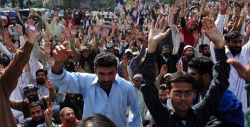 Agriculture accounts for more than one-fifth of economic output and two-fifths of employment. But the country is rapidly urbanizing as millions are forced from the abject poverty of the countryside into the teeming slums of the grossly overcrowded cities. Despite the predominance of low-technology agriculture in many regions, there is quite a lot of industry—certainly more than existed in Russia in 1917—especially in Karachi, which can be considered the “Petrograd of Pakistan.” Other important industrial centers include the ancient capital of Lahore, as well as Faisalabad, Gujranwala, Hyderabad, Gaddon, Hattar, Hub, Peshawar, and Multan. More than 50% of Pakistanis now live in towns or cities of 5,000 or more inhabitants. Combine this with the fact that more than half the population is under 22-years of age and the revolutionary implications of these demographic shifts are clear.
Agriculture accounts for more than one-fifth of economic output and two-fifths of employment. But the country is rapidly urbanizing as millions are forced from the abject poverty of the countryside into the teeming slums of the grossly overcrowded cities. Despite the predominance of low-technology agriculture in many regions, there is quite a lot of industry—certainly more than existed in Russia in 1917—especially in Karachi, which can be considered the “Petrograd of Pakistan.” Other important industrial centers include the ancient capital of Lahore, as well as Faisalabad, Gujranwala, Hyderabad, Gaddon, Hattar, Hub, Peshawar, and Multan. More than 50% of Pakistanis now live in towns or cities of 5,000 or more inhabitants. Combine this with the fact that more than half the population is under 22-years of age and the revolutionary implications of these demographic shifts are clear.
Like Bangladesh, textiles account for most of Pakistan’s official export earnings. The country is heavily dependent on remittances from the millions of Pakistani economic exiles who have been forced to seek employment overseas for lack of opportunities at home. Since March 2011, an average of $1 billion has been sent every month. Thus, labor power, in the form of these workers, who toil in slave-like conditions in the Gulf States and elsewhere around the world, is one of the country’s top exports. Drug, arms, and human slave trafficking on the black market are also major sources of income, especially along the border with Afghanistan.
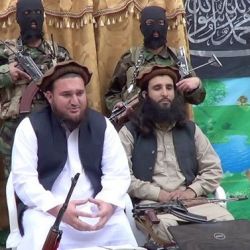 Perhaps the best way to describe Pakistan is that it is like tsarist Russia but with cell phones, internet, satellite television, AK-47s, drones, and Islamic fundamentalism (although the Russian Orthodox Church wasn’t that different in the role it played!). The Inter-Services Intelligence—the dreaded ISI—is a de facto state within a state, and functions like the FBI, CIA, Pentagon, Army Intelligence, and NSA all rolled into one. It is a major player in the lucrative business of smuggling everything from opium to rocket launchers, food to fuel, bonded laborers to spices. They have their hand in every pot of honey in the country and also have a heavy influence and in many cases direct control over the media and politics in general.
Perhaps the best way to describe Pakistan is that it is like tsarist Russia but with cell phones, internet, satellite television, AK-47s, drones, and Islamic fundamentalism (although the Russian Orthodox Church wasn’t that different in the role it played!). The Inter-Services Intelligence—the dreaded ISI—is a de facto state within a state, and functions like the FBI, CIA, Pentagon, Army Intelligence, and NSA all rolled into one. It is a major player in the lucrative business of smuggling everything from opium to rocket launchers, food to fuel, bonded laborers to spices. They have their hand in every pot of honey in the country and also have a heavy influence and in many cases direct control over the media and politics in general.
The Army, which has governed for most of Pakistan’s short history, looms large in society, commenting on political issues daily and intervening directly often. But the different factions of the bourgeois, Army, and the ISI are far from being united, and seat of government at Islamabad is one of the world’s premiere “houses of ill repute” combined with Byzantine-esque court of intrigue. The entire state apparatus is rotten, corrupt, and constantly teetering on the brink, and a “get rich while you can” attitude permeates the top of society. This is summed by a popular joke: “Where is the capital of Pakistan? In Switzerland!”
All of this has been driven, exacerbated, and encouraged by imperialism, which treats the ordinary masses of the South Asian Subcontinent as disposable pawns in a “Great Game” for this strategically important and resource-rich part of the world. It is imperialism that has unleashed the juggernaut of fundamentalism onto the world, with the most downtrodden in society crushed under its wheels. It is imperialism that has cynically used the local bourgeoisie to “divide and rule” this beautiful, resource-rich, productive, and potentially bountiful land. And despite all the horrors described above, we must bear the following firmly in mind: it has not always been like this.
A brief history of Pakistan
At around the same time as in Egypt, Mesopotamia, and China—perhaps even earlier—the South Asian Subcontinent saw the rise of agriculture, cities, and civilization in the Indus River Valley of modern Pakistan. At sites such as Harappa and Mohenjo Daro, sprawling and ordered cities emerged, tying together a vibrant culture with trading ties throughout the Ancient world. Climate change likely led to the Indus Valley civilization’s decline—after some 2,000 years—and the center of civilization in the Subcontinent shifted to the Ganges plain. It was also in this part of the world also that the Vedic civilization and Hinduism, Buddhism, and Jainism emerged. One culture and civilization followed and overlapped one another: Indo-Aryans, Kalinga, Nanda, the Mauryan empire of Chandragupta Maurya, Chanakya, and Ashoka, the Indo-Greeks, Indo-Scythians, Kushans, Guptas, Cholas, Rajputs, Vijayanagaras, Sikhs, Moghuls, Marathas, and of course the Portuguese, Dutch, French, and the British and the Raj.
The area now designated as Pakistan saw endless migrations and invasions by Greeks, Huns, Mongols, Chinese, Turks, Persians, Afghans, and dozens more—a true melting pot of humanity over thousands of years. The region has long been a constant whirlwind of contributions to art, science, philosophy, architecture, music, food, and technology, with a profound cultural influence and complex trade routes to Persia, Greece, Arabia, Rome, and the whole of Southeast Asia.
But Pakistan’s modern history begins with the decline of the British Raj, especially after World War II. Their brutality and overwhelming might on paper notwithstanding, India was never fully subjugated by the British, even though they used local troops and played one local leader off another to “divide and rule.” Some 535 individual princedoms and city states remained outside the direct control of the British at the time of partition. They never were able to conquer Afghanistan despite several attempts to do so. There were many heroic revolts and uprisings against the British, among them the so-called Sepoy Rebellion of 1857, the independence movement of socialists and communists that included the great martyr Bhagat Singh, and the earth-shaking uprising of the Indian Navy in 1946.
From the beginning, the Indian National Congress, most famously associated with Nehru, Jinnah, atel, Prasad, Chandra Bose, and Gandhi, aimed to keep the movement within safe channels. It was actually founded by the Briton Allan Octavian Hume, with the aim of “obtaining a greater share in government for educated Indians… to form a platform for civic and political dialogue of educated Indians with the British Raj.” Terrified that the pressure cooker of the postwar mass movement for national liberation could not be contained and would explode into all-out socialist revolution, the British and their local stooges condemned millions to their deaths by setting the people of the Subcontinent against one another in order to save their own skins—and preserve their ability to exploit its people and resources.
Partition
Partition in 1947 was one of the greatest crimes of the 20th Century. It was an absurd and reactionary plan from the beginning, with an alleged homeland for Muslims, divided into East and West Pakistan (now Bangladesh and the Islamic Republic of Pakistan, respectively), separated by an ostensible home for Hindus in between, in the form of the much more massive state of India. The line was drawn by British civil servant Cyril Radcliffe, who was neither a cartographer nor a politician, and who had never visited India before arriving in Delhi with barely a month to complete his impossible task. Incredibly, the actual lines of demarcation were not made public until after the “independence” celebrations were held in Delhi and Karachi.
The knives came out as the local bourgeoisie embarked on a mad scramble to incorporate every possible princely state, tribal territory, and scrap of land into “their” country, using religion as a measuring stick. In a part of the world where people had mixed and mingled for millennia, nearly 15 million were expected to pull up stakes and move, literally overnight, based on their religion or ethnic background, forced into one artificial nation state or the other. Muslims were to report to East and West Pakistan, while Hindus and Sikhs were to go to India.
The madness of the supporters of partition is illustrated by the fact that Muslim nationalists wanted to dismantle the Moghul-built Taj Mahal in Agra, India and move it to Pakistan, while Hindu nationalists wanted to divert the Indus River in Pakistan into India, as that is where the Vedic civilization that birthed Hinduism originated. And never mind that Sikhism had its historical base in what became Pakistan (Lahore had been the capital of the short-lived Sikh Empire), and that temples from a thousand religions and sects criss-crossed the entire Subcontinent, including temples to the Greek god Apollo and Zoroaster.
The inter-communal violence spun out of control, and at least a million innocent people were murdered in a wholesale slaughter by frenzied mobs. Entire families and villages were hacked to pieces, burnt alive in train cars, shot en masse, and worse. Millions of others were beaten, raped, tortured, and crippled for life. Families were divided by barbed wire and minefields that claim lives to this very day. The British cynically stood by and watched it happen, powerless to control the primal forces they had unleashed.
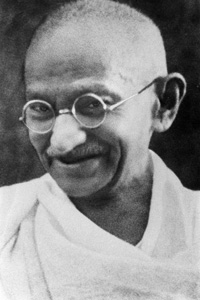 For the role they played in this human disaster, the names of Lord Mountbatten, Winston Churchill, Clement Attlee, Jawaharlal Nehru, Gandhi, and Muhammad Ali Jinnah (who, by the way, loved whisky and ham sandwiches and “regretted” pushing for Partition on his deathbed) will forever live in infamy. The pernicious role of Stalinists should be noted as well. In yet another example of the crimes and tragedy of Stalinism, they tail-ended the national bourgeoisie, instead of giving a class independent and internationalist lead, preferring partition to socialist revolution.
For the role they played in this human disaster, the names of Lord Mountbatten, Winston Churchill, Clement Attlee, Jawaharlal Nehru, Gandhi, and Muhammad Ali Jinnah (who, by the way, loved whisky and ham sandwiches and “regretted” pushing for Partition on his deathbed) will forever live in infamy. The pernicious role of Stalinists should be noted as well. In yet another example of the crimes and tragedy of Stalinism, they tail-ended the national bourgeoisie, instead of giving a class independent and internationalist lead, preferring partition to socialist revolution.
Given his saint-like portrayal in the US, a few lines on the real Mohandas K. Gandhi are in order. Far from the holy, irreproachable, spiritual guru of nonviolence, standing above politics and this earthly vale of tears, the Mahatma was very much involved the filthy world of bourgeois politics, class collaboration, and religious sectarianism.
As a good subject of the British Empire, he duly supported British imperialism in WWI—in which 1,000,000 Indian troops were forced to serve and 75,000 died—organizing logistical support for the military. While living in South Africa, seeking his fortune as a lawyer, he was not so bothered by treatment of blacks (or “kaffirs” as he referred to them in his letters), as much as he resented not being treated like a proper subject of the Crown. His logistical abilities were also put to use here, helping facilitate punitive excursions by the British against the Zulus.
His humble loyalty to the Raj continued during World War II, when he again helped organize logistical support for British imperialism. In the many rebellions and uprisings against British occupation, Gandhi always sided with the imperialists. He was an avowed and rabid anti-communist, and while he could have intervened to save Bhagat Singh from the gallows, he pointedly refused to do so, preferring instead to continue his collaboration with the Raj, seeking the best possible deal for himself and his cronies in post-British India.
He was a representative of high-caste Brahmins and native ruling class—yet he claimed to speak for all untouchables/dalits although in practice he never did anything ever to organize them. And as for the repressive and reactionary caste system itself, he was not opposed to it altogether—only its “excesses.”
He manoeuvred with and against Muslims opportunistically—and embraced religion as a way of dividing the people of the Subcontinent. For example, although allegedly a devout Hindu, he supported the restoration of the retrograde and medieval Ottoman Empire and Muslim rule in Turkey. A renowned Luddite, he was against modern industry and technology, which means that in practice, he wanted the masses to remain in primitive/feudal squalor, instead of fighting in unity for socialism and the true unleashing of human and technological potential.
As for his much-lauded nonviolence and love for all things great and small, his philosophical outlook was actually an eclectic, inconsistent, and reactionary mish-mash of retrograde primitivism and good old-fashioned bourgeois pragmatism and empiricism, which was also the case with his politics. For example, in the face of rising anti-Semitism in Nazi Germany, he advocated nonviolence by the Jews and urged them to “melt Hitler’s heart” instead of irreconcilable class struggle to smash the fascist menace. He had a similar line when it came to the Japanese invasion of China, and offered similar advice to the Czechs when Hitler invaded them. Also in the name of “nonviolence,” he graciously invited the British to allow Nazis attackers into their homes, or be slaughtered if necessary: [Let the Nazis] “take possession of your beautiful island, with your many beautiful buildings. You will give all these but neither your souls, nor your minds. If these gentlemen choose to occupy your homes, you will vacate them. If they do not give you free passage out, you will allow yourself man, woman and child, to be slaughtered.”
This, after addressing Adolph Hitler as “my friend” in a letter in 1939, which is unsurprising considering his admiration for Mussolini, who he applauded for his “service to the poor, his opposition to super-urbanization, his efforts to bring about coordination between capital and labour [and] his passionate love for his people.”
To all this must be added his disgusting hypocrisy on women’s rights, sex and sexuality, including his rabid denial of the importance of women’s sexual health. Few of his fans mention the fact that the “Great Soul” frequently slept naked with his underage grandniece Manu and other attractive young women, to “test his powers of resistance” to sexual temptation and earthly erections. According to witnesses, his powers may have lapsed on at least one occasion. [Note: If anyone has any doubts about all this see a review in The Independent on a recent biography of “Gandhi: Naked Ambition” by Jad Adams]
Post-Partition Pakistan
Partition disfigured the Indian Subcontinent in a way that can only be remedied through the socialist revolution throughout the region. From beginning of its tragic existence, Pakistan has been a twisted, distorted mess. Even its name, which means “Pure Land,” is a misnomer. Year after year, the beauty, infrastructure, and social cohesion of this land have been ground relentlessly into the dust and rotting filth of weak and decaying capitalism. To give one glaring example, Pakistan’s first budget, in 1948, allocated a staggering 85% of its total resources to defence, and this priority continued during the first ten years of independence. 60 years since independence, the entire region is more dependent on imperialism than when under direct occupation, and the masses are more impoverished than ever. India and Pakistan have gone to war four times, in 1948, 1965, 1971, and 1999. Both are now nuclear powers. The bleeding ulcers of Kashmir, Punjab, Bengal-Bangladesh, and Pakistan’s Balochistan, tribal areas, and Afghanistan remain as a legacy of imperialism.
Pakistan first existed as an “independent dominion” of the British Empire until the declaration of the Islamic Republic in 1956. For most of its existence since so-called democracy and independence were introduced, it has been under some form of military dictatorship, though often disguised as a civilian democracy headed by a coup-leading general. And given its strategic position, Pakistan was drawn into the heart of the Cold War, ostensibly as a US ally, though it also looked to China.
The first post-Partition dictatorship was that of Ayub Khan, installed in 1958 (supported by Mao and co. in China). During these “golden years,” 22 families owned 66% of the country’s industrial assets, 79% of insurance, and 80% of banking, while the average income per capita in West Pakistan was $50 per year. While the Western part of the divided country was at least developed with some industry (in particular, steel and the armaments industry), East Pakistan remained mired in semi-feudal backwardness, dependent on rice and jute exports, and had an average annual income of just $20 per capita.
Over the years, the pressures and contradictions built up, and the working class was strengthened and demanded its rights. This culminated with the glorious episode of the 1968/69 Revolution. Most people remember 1968 for the May events in France, Soviet tanks rolling into Czechoslovakia, and police violence at the DNC in Chicago. But Pakistan too was sucked into the maelstrom of revolution, in an inspiring classical proletarian revolution. It is no accident that we are not told anything of this in the US.
Revolution and Counter-revolution
The relative industrialization of the 1950s and 60s led to a strong proletariat. The revolution began as a student movement and uprising in East Pakistan, with the police shooting demonstrators in Dacca. A general strike was called, and Ayub Khan tried to give concessions. But as Hosni Mubarak found out in Egypt in 2011, once the masses are mobilized and have lost their fear of the state’s repressive apparatus, even sweeping concessions are often too little, too late. The strike wave spread to the whole of the country, sweeping up the whole of the working class and every layer of society, in the biggest organized mass movement in Pakistan’s history. 25,000 railroad workers with red flags marched in Lahore. The power workers cut power to presidential palace and government buildings and informed the dictator that the game was up. Peasants seized the land and dealt none-too-kindly with the criminal landlords and rent collectors who enriched themselves and the regime at the peasants’ humiliating expense.
The prejudices of religion, gender, ethnicity, race, nationality, clan, or tribe evaporated in the spirit-lifting solidarity of the revolutionary struggle. The military was wavering and seen by the ruling class as unreliable. Filmmakers and artists also played a significant role in inspiring the revolutionary people. All the classical elements for a proletarian revolution and the seizure of power by the working class were present: except the necessary revolutionary leadership. True to form, the Pakistani Communist Party and the Maoists refused to give a lead—they actually supported the regime and worked to demobilize the masses. A genuine Bolshevik leadership could have channeled the energy of the masses into the socialist transformation of society, which would have had far-reaching effects in India, Afghanistan, Iran, China, and beyond. Unfortunately, such a leadership did not exist at that time, and the roaring flood of revolution gradually receded.
Z A Bhutto speaking in SimlaIt was in this context and milieu that the Pakistan People’s Party (PPP) was formed [in 1967] and rose rapidly to prominence. Nature abhors a vacuum, and something had to fill it. It was led by Zulfiqar Ali Bhutto, himself a landlord from Sindh and former foreign minister for Ayub Khan. The PPP is a very peculiar formation. It is technically a bourgeois party, but its founding manifesto called openly for nationalization of the means of production, an armed people’s militia, and for socialism. It became the vehicle through which the masses expressed themselves for decades—and until a mass alternative is built, the jury is still out on whether or not it will revive again despite its recent drubbing in the 2013 general election.
The wave of revolution from 1968/69 did not die easily—its effects reverberated for several years. There were momentous developments in India as well, especially in West Bengal, and in particular in the enormous city of Calcutta. It was a dangerous situation for ruling class on both sides of the Radcliffe Line. Marred “democratic” elections in 1970 led to further student movements and another revolutionary upsurge, particularly in the East. The Army again attacked and unleashed pogroms by lumpen thugs and militias against intellectuals, students, Bengali nationalists, and religious minorities.
The entire situation was spiralling out of control for both Pakistan and India. In order to derail the movement, war between the two countries was engineered in the Spring of 1971, resulting in an Indian victory and the breakaway of East Pakistan to form Bangladesh. In reality, it was the ordinary masses who defeated the Pakistan Army, and the Indian Army was then used to clamp down on dissent in the aftermath, to prevent the overthrow of capitalism altogether by the masses.
The short tenure of the dictator Yahya Khan, who had come to power when Ayub Khan fell in March of 1969, ended after the humiliation of the war with India, and he was forced to cede power to Zulfiqar Ali Bhutto and the PPP. Bhutto was faced with two alternatives: either carry out the socialist revolution or carry out the dictates of capital. This is the same choice all such leaders in such a position must make. As he was not a Marxist and not a genuine revolutionary, he chose the latter—and paid for it with his life.
Zia ul HaqWhile in power, Bhutto—the father of future Prime Minister Benazir Bhutto—initiated many progressive reforms that gave some relief to the masses. But he did not implement the full program of the PPP, which had excited such enthusiasm and illusions in those who had fought and died to overthrow the dictatorship. The other side of Bhutto can be seen in the fact that he supported the Army in its brutal repression and war in Balochistan, and it was actually Bhutto who initiated the conscious process of Islamisation of the country as a way to tame the masses. He compromised with the feudalists and capitalists, and gradually allowed the Army to get back in control. In July 1977, he was overthrown by General Zia ul Haq, who imposed a new dictatorship, far more vicious than Ayub Khan’s. Abandoned by the masses he betrayed, Bhutto was hanged by the regime in 1979. The long nightmare that has gripped Pakistan for decades began in earnest.
The process of Islamisation was accelerated and deepened under Zia—aided and abetted consciously by US imperialism as a cynical counter to socialist revolution. Lahore, the ancient regional and cultural capital, was considered the “Paris of the Subcontinent” as recently as the 1970s. Women could wear miniskirts and other fashions if they so chose, and nightclubs and bars abounded. There was a vibrant life on the streets, in restaurants, cafes, literary clubs, poetry, music, and much more. For the majority, all of this has now been stamped out by the Frankenstein monster of Islamisation, car bombings, endless Army checkpoints, and grinding poverty. To give another example, the Swat Valley, infamous today for being taken over by the Taleban in 2009, and for the shooting of Malala Yousafzai, was once a bustling international-destination ski resort known as the “Switzerland of the Subcontinent.”
It should be clear from the foregoing that there is nothing inherently “backward” or “reactionary” or “fundamentalist” in the people of Pakistan. On the contrary, the 1968 revolution is a magnificent example of the power and élan of the world working class in general and the Pakistani working class in particular. But the history of the 20th Century provides ample proof that without the necessary leadership, these revolutionary upsurges can flounder and fail—and history makes humanity pay for these failures. The key to understanding the nightmare that the region has been plunged into lies in a Marxist analysis of the potential and eventual failure of three great revolutions: Pakistan in 1968, Afghanistan in 1978, and Iran in 1979. Without taking into account this context it is impossible to understand the counterrevolution that has gripped the region in one form or another in recent years. And more importantly, we must draw the necessary conclusions and work to build a revolutionary leadership in advance, as it cannot be improvised in the heat of revolution, and the cost of failure if woefully high. It is not easy, it is not linear, but there is no alternative if we are serious about ending the inhumanity of capitalism.
The misery and betrayals deepen
Benazir Bhutto
The dictator Zia ul Haq died in a “mysterious” plane crash in 1988, along with the Chairman of the Pakistani Joint Chiefs of Staff Committee and the United States Ambassador to Pakistan. In a wave of mass enthusiasm and expectation, Benazir Bhutto, daughter of the Zulfiqar, came to power. However, like her father, she too compromised with the state and the army, adopted “free market” policies,” demoralized the masses, and was ousted on corruption charges. She was followed in 1990 by billionaire Nawaz Sharif, who deepened the misery before he fell from grace in 1993. Benazir then made a short-lived comeback from 1993–96, also marred by blatant corruption and attacks on the unions, and was followed again by Nawaz Sharif, who of course continued his policies of privatization and cronyism. He was subsequently ousted in 1999 in yet another military coup, this time by General Pervez Musharraf, who was then “democratically” elected President in 2001, ruling until 2008.
Benazir Bhutto killedAfter years in exile, despite her numerous previous betrayals, due to the lack of an alternative and the PPP’s revolutionary origins and deep traditions among the workers and poor, Benazir was greeted in 2007 as a returning hero. Millions were on the streets, rallying to the PPP’s historical demand of roti, kapda, aur makaan—bread, clothing, and shelter! Once again the masses were on the move and threatened to get out of hand. To head off the threat of a Benazir government pushed into power by the energised masses, she was unceremoniously murdered at a mass rally on the campaign trail in Rawalpindi. The explosive outpouring of grief and rage led to days of rioting, burning, and looting, but due to the relative weakness of the Marxists at that time, could not be channelled into the revolutionary transformation of society.
Her husband, Asif Ali Zardari—who many suspect may have had a hand in his wife’s assassination—was elected President on behalf of the PPP. He took the age-old Pakistani political game of corruption, deceit, and double-dealing to new levels, deeply discrediting the PPP in the process, and was tossed out of office in the 2013 elections. He was the succeeded by none other than the billionaire Nawaz Sharif, now in his third non-consecutive term as current Prime Minister. Such has been the history of “democracy” in Pakistan’s short and agonizing existence.
The Struggle
Nawaz Sharif
With the return of Nawaz Sharif in the midst of the global capitalist crisis, we have entered a new stage in the history of the class struggle in Pakistan. The richest man in Pakistan, he has announced the privatization of 65 major industries and has already unleashed relentless attacks on the workers and poor. Nonetheless, the future for the Pakistani working class is far from bleak. Dialectics explains that at a certain stage, all things inevitably turn into their opposite. As the adage says, “the darkest hour is before the dawn,” and Pakistan has been living through dark days indeed.
This is where the comrades of the Pakistani section of the International Marxist Tendency enter the stage. Known as The Struggle—the name of their Urdu paper (طبقاتی جدوجہد)—they are truly the jewel in the crown of the IMT. Founded from exile in Europe in the early 1980s by Lal Khan, they have painstakingly established themselves as the only serious force on the left in Pakistan.
Their thousands of members work in hundreds of branches in 13 different regions, each divided into several areas, in every major city and town in the country, and many smaller ones as well. They have several dozen offices, and they engage in an enormous amount and variety of work. They are the only organization working in every area and among every linguistic and ethnic group in the country, including Giglit/Baltistan on the Karakoram Range bordering Xinjiang province in China—the highest war zone in the world. From Balochistan to Kashmir, Waziristan and the Swat Valley to Sindh, Punjab to Khyber-Pakhtunkhwa, they work under extremely dangerous conditions.
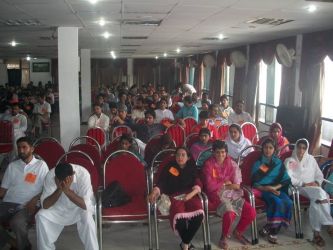 Hundreds of comrades have been forced to leave the country in search of work due to the deepening crisis. Many comrades have been murdered in the course of the last few decades, some directly over politics, others simply because they were in the wrong place at the wrong time. Others have been killed in earthquakes or in other infrastructural collapses. Others have been shot and wounded, kidnapped, tortured (including one comrade who had his fingernails pulled out at the infamous prison in the Lahore Fort)—but carry on the struggle. The comrades’ sense of humility, resolve, patience, and perseverance through thick and thin without a word of complaint is truly uplifting.
Hundreds of comrades have been forced to leave the country in search of work due to the deepening crisis. Many comrades have been murdered in the course of the last few decades, some directly over politics, others simply because they were in the wrong place at the wrong time. Others have been killed in earthquakes or in other infrastructural collapses. Others have been shot and wounded, kidnapped, tortured (including one comrade who had his fingernails pulled out at the infamous prison in the Lahore Fort)—but carry on the struggle. The comrades’ sense of humility, resolve, patience, and perseverance through thick and thin without a word of complaint is truly uplifting.
The comrades produce material in several languages, with Urdu, English, and Sindhi papers coming out regularly. Like every section of the IMT, they have a strong emphasis on theory, and publish multiple books and pamphlets every year, from Marxist classics, to writings by Lal Khan and other comrades of the IMT such as Alan Woods and Ted Grant. They also publish tens of thousands of leaflets and posters each year, which they use in the various campaigns they are energetically engaged in.
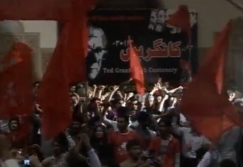 Their work in the Pakistan Trade Union Campaign (PTUDC) is one example. The campaign was founded after the assassination of our comrade Arif Shah, the President of the Punjab Labour Federation, by hired agents of the employers. After taking action to block the main Lahore-Karachi highway for more than five hours, 20,000 workers attended comrade Arif Shah’s funeral the following day and pledged to carry on the struggle. Since then, the PTUDC has become a nationwide network of militant trade union struggle and international solidarity, present in every single labour battle in Pakistan. From Coca Cola, Nestlé, water and power, railways, steel mills, ports, armaments, nurses, highways, labourers, Pakistan International Airlines, the Young Doctors movement, and more, the comrades of the PTUDC are on the front lines fighting the bosses. An all-out campaign called “War Against Privatisation” has been launched to counter Nawaz Sharif’s offensive.
Their work in the Pakistan Trade Union Campaign (PTUDC) is one example. The campaign was founded after the assassination of our comrade Arif Shah, the President of the Punjab Labour Federation, by hired agents of the employers. After taking action to block the main Lahore-Karachi highway for more than five hours, 20,000 workers attended comrade Arif Shah’s funeral the following day and pledged to carry on the struggle. Since then, the PTUDC has become a nationwide network of militant trade union struggle and international solidarity, present in every single labour battle in Pakistan. From Coca Cola, Nestlé, water and power, railways, steel mills, ports, armaments, nurses, highways, labourers, Pakistan International Airlines, the Young Doctors movement, and more, the comrades of the PTUDC are on the front lines fighting the bosses. An all-out campaign called “War Against Privatisation” has been launched to counter Nawaz Sharif’s offensive.
The comrades have dozens of important positions in the trade unions, always on a clear revolutionary programme. To give one example, after a bitter election battle against various class-collaborationist old-guard leaders, one of our comrades was elected president of the General Post Office Union in Quetta. Another comrade, just 20 years old, is a leader of the Karachi steel mill workers. However, the work in the labour movement is connected to every other aspect of the work and is not seen in isolation. For example, the comrades use their various positions (trade union, student, etc.) to organise May Day rallies. This year, rallies were held in over 60 cities and towns, with thousands of people signed up as supporters of the PTUDC in the run-up to May 1st.
Thousands of comrades participate in the recent national congress of The Struggle – Read the report of the congress hereTheir work among the youth is of crucial importance as well. The comrades are active in universities, doctors’ colleges, and other schools across the country, for example from the largest, Punjab University in Lahore, to smaller colleges in Balochistan and Pashtoonkhwa. Their campaign Unemployed Youth Movement BNT also launched a mass membership campaign in the run-up to May Day, with the target of signing up 1,000 members in each region. The comrades have also begun an important youth initiative in Balochistan and Pashtoonkhwa: a Pashto youth front called “Awakened Youth” reviving the traditions of the PDPA in Afghanistan. This will allow the comrades to connect with nationalist youth in Pakistan and Afghanistan, in areas with a rich revolutionary tradition, despite the counterrevolution of the last few decades. In Kashmir, the comrades are launching a Campaign for a Socialist Kashmir on both sides of the line of control (since Partition, Kashmir has been divided between and occupied by India and Pakistan). In addition, our comrade is the president of the important mass Kashmiri youth organization, the Jammu Kashmir National Students Federation (JKNSF).
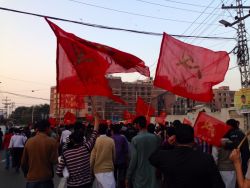
Election poster of comrad Ali WazirSlowly but surely, the comrades of the IMT in Pakistan have built up points of support and recruited from every layer of Pakistani society. Lal Khan, who once had a “shoot on sight” order hanging over his head during the Zia ul-Haq dictatorship, is now published several times weekly in 3 mainstream newspapers, with regular columns in Urdu and English, mercilessly exposing and attacking the regime and capitalism. Another of our comrades is the host of the most-popular morning programme in Punjab (and the second-most popular in the entire country), on which millions of viewers get to hear him put forward the views of The Struggle and marxist.com. Several comrades have also run for National Assembly in the past, using the campaigns as a way to put forward our programme and positions.
Mass rally in Waziristan
Most recently, comrade Ali Wazir was fraudulently denied victory in South Waziristan, despite mass support and rallies of 30,000 or more, resulting in his winning a majority of the votes—until a “re-vote” was taken and his majority mysteriously disappeared.
From a handful of dedicated and self-sacrificing comrades in the 1980s, basing themselves on the ideas of Marx, Engels, Lenin, Trotsky, and Ted Grant, they have sunk roots everywhere, winning everyone from groups of illiterate peasants to progressive landlords, former Taleban commanders to renowned doctors, artists, pop stars, and intelligentsia who can see that the current set up is untenable. They are now also beginning mass work among the peasants of Sindh, who live in serf or slave-like conditions at the mercy of the landlords, but who for the first time in centuries are beginning to raise their heads under the banner of The Struggle. Their annual Congresses fill the largest hall in Lahore, and are a marvel of political and logistical preparation, organisation, and efficiency—all in the midst of sabotage by the state, power outages, and train robberies by bandits as delegates make their way from the far-flung regions of the country.
The comrades have a strong internationalist approach. In addition to actively participating in the life of the IMT—when racist immigration authorities do not block them from visiting Europe—they understand that the IMT must build powerful sections worldwide. Added to this is the fact that building in Pakistan is like building an international within an international, given the many nationalities that coexist within the artificial borders of this enormous slice of the planet.
Needless to say, The Struggle is a source of inspiration to workers and youth worldwide, particularly those in Muslim countries—after all, if it can be done in Pakistan, why not everywhere else?
In a country like Pakistan, “socialism or barbarism” is not an empty phrase. It is the stark reality confronting hundreds of millions of people from Afghanistan to Bangladesh. But a new 1968 is being prepared—on an even higher level—and now the IMT is present. However, despite their impressive gains (which have not come easy!), we should not exaggerate: their work is far from over and must be deepened further, a fact that the comrades in Pakistan are keenly aware of. More cadres and an even stronger and broader leadership must be developed, more money raised, more offices acquired and full timers hired, stronger organisational structures established, more meetings and visits to the areas organized, more roots sunk into every nook and cranny of the country.
We can and must do our part to help them. The comrades in Pakistan understand that no matter how successful they are, until the socialist revolution is victorious worldwide—including the US, Europe, Japan, China, and India—their gains will always be in danger. Therefore, if we are serious about our internationalist revolutionary duty and want to support the work of the comrades of The Struggle—and not merely stand on the sidelines of history—we must redouble our efforts to build the IMT.
The misery and despair convulsing the planet represents the birth-pangs of the new society emerging from the decaying shambles of the old. The current torment is only a prelude to a new flowering of humanity under socialism. As we have seen, a few decades is nothing in the history of the South Asian Subcontinent. There have been many dramatic ups and downs in its vast history, and it should surprise no one if the socialist transformation of the world begins in “backwards Pakistan.” The Socialist Federation of the South Asian Subcontinent will be but the first step toward the Socialist Federation of the World
Workers of the world unite!
Long live The Struggle!
Fight for socialism and the liberation of humanity!
Build the IMT in Pakistan, the USA, and worldwide!


